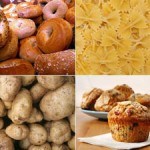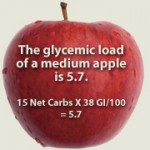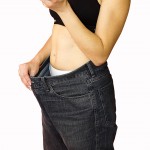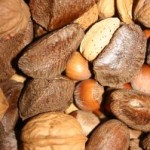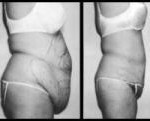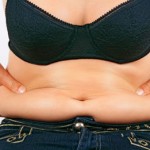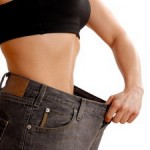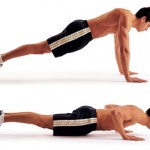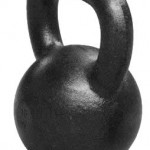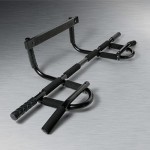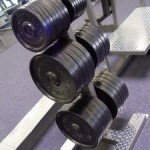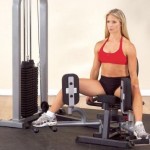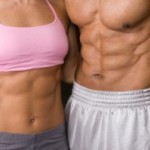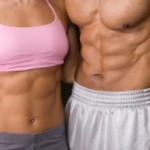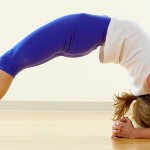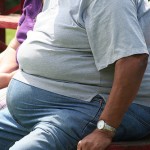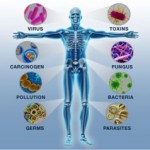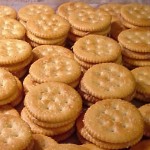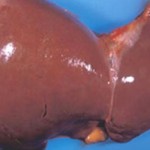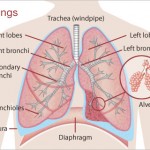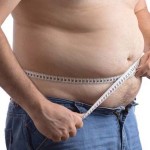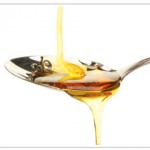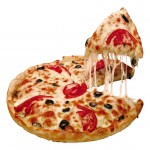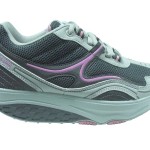| Welcome back!!
Let’s put a new spin on the usual New Year’s Resolution mess – let’s use the start of the new Financial Year (July 1st) as the deadline to get our house in order and be ready and able to shed fat, refire our metabolisms and get healthier & fitter!!
This is how it works – it’s the 10th of June as I write this and you have until the 30th to get your kitchen prepared and ready for the next 12 months of right eating, exercising and living…You’ll have to hustle to get everything ready for the new, improved you…
 Why wait for january 1st?? What will your fridge have inside of it? Your cupboards and your pantry? What will be in your freezer? Don’t forget – you cannot out train a poor diet so your health & leanness and fitness will depend upon on your kitchen and food supply…
The question is this. Is your kitchen prepared for the new you? Will they look inside your fridge and be impressed with your nutritional choices or will they cancel their developing path in your future? Will they have to call in a kitchen version of Extreme Makeover?
In this week’s blog I’m not going to try to give you an idea of what, where, when and why to eat – I presume that you’ve done enough research both here and on other blogs to have an idea of what works best for your body to become fit & lean…
Instead I’m going to try to give you an idea of the action-steps you need to take in order to execute your ‘new, leaner me’ plan effectively in FY 2011/12.
Get Started- Create a Safe House
No – not one with safety bumpers and all sharp corners padded… Before the new Financial Year arrives you have to get the nerve centre of the house, the very heart of it in shape. We need to alter it so that it starts to resemble a place where Pro athletes and the lifelong lean come to eat. Let’s try to set a high standard from the get go. If you want a healthy lifestyle, a lean fit body then your kitchen has to become transformed into a place where you can eat like a champion.
The plan is to remove all foods that are not conducive to and supportive of your revitalised metabolic, lean body, fit goals and replace them with foods and a variety of better choices that do.
I’ve already made reference to the study that showed the closer candy is the ore you eat, the more visible junk food is the more folk eat…so if you get the junk food, the processed food out of the house you will not eat it. If it is there don’t try to kid yourself – you will eventually eat it.
 If they're in your house you'll eat them sooner or later... The key here is to view your home like a Neighbourhood Watch credentialed ‘safe house’ – that is a place where you can find sanctuary from poor foods & food choices. A safe place where you are free from all the temptations of the food we know do not support a reconditioned, fat free, lean physique. Everywhere else you go there will be temptation – fast food for the quick lunch, finger food at socials, alcoholic beverages at parties, sweets at a friend’s house or apartment, birthday cake at work and.. the list goes on. With all of this temptation, this potential for sabotage, you need to create a safe house you can return to each night.
Here’s how to do it right for FY 2011/12:
The Fridge and Pantry Makeover
Okay – empty your fridge, pull everything out & put it on the kitchen counters. Look at the cornucopia of uncleanness you have brought into the light of day… and move it to one side for the moment. Now strip out the pantry – same drill put everything onto the kitchen counter, if you don’t have room then bring out the garbage bin, put a fresh liner into it and walk around and start to fill it…
Now you need to call your family, your wife, your husband, or your boy / girlfriend together ‘cause tis fridge & pantry cleaning time!
For some reason it is easier to re-stock a clean empty fridge with healthy food choices if it has been scrubbed within an inch of its life first. Don’t take my word for it – try it!!(if you are feeling really ambitious throw in an oven clean as well…)
What to put in the Bin
In reality there are few actually ‘bad ‘foods, just foods that are eaten at the wrong times. An occasional Big Mac or packet of crisps or Mars bar or handful of M&Ms will not hurt you – the trick is occasional.
Here are some guidelines that, if you follow them, will get you into a smaller pair of jeans sooner…
SODAS AND JUICES – Both are essentially water and sugar – if you want fruit eat the real thing or juice your own.
PROCESSED MEAT – store pre-made burgers, sausages, pepperoni, bacon and related foods are
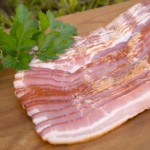 Fats, Nitrates & sodium - not what you want to be eating... absolutely full of fat. We know that all fat is not bad for us but heaps of saturated fat with lots of nitrates (just one of the 10+ preservatives used in the meat processing industry) lots of sodium and you have a heap of protein that will set your health & quest for leanness way back. These foods are NOT good sources of protein.
FROZEN DESSERTS AND ICE CREAM – Sugar, artificial colours, preservatives, fats – nothing here is a good choice to eat. Want some dessert try Greek yoghurt with some peanut butter whipped in…
SAUCES & DRESSINGS – doesn’t matter the name if it falls into the categories of ketchup, barbecue or mustard sauce, mayonnaise, French, Italian or greek dressing most of these are really just another way to get a lot of HFCS. Use pan juices or homemade. You’re much better off spicing up your meals naturally with spices and herbs and just avoiding all the sugar and extra empty calories commercial sauces & dressings provide.
PROCESSED FOODS – View with suspicion anything that is in a box, a wrapper or bag. Especially beware those with lots of bright colours and which proclaim ‘Low Fat’ or ‘Reduced’ something… You should hear an air raid siren when you look at these types of ‘food’ choices. Rule of thumb – if sugar (any type) is in the top 5 ingredients, if it appears in more than 1 form or if the label has more than half a dozen ingredients that sound like they belong in a Lab – then out it goes.
More likely than not what you were looking at was de-natured, processed, nutrient-sparse and not really fit for humans to eat. Most of these foods have a long list of binders and fillers that give a longer shelf life but add nothing nutritionally. The other test is if your Grandmother would not recognise it as food then out it goes… Avoid this processed stuff at all cost!
SAVOURY BISCUITS & CRACKERS – As per the above – but with the delights of added sodium and more than likely a helping of trans fats…
BISCUITS & COOKIES – Fat, sugars, flavourings, binders, fillers, artificial creams – just a disaster..
 White flour as an ingredient - not what we want... WHITE FLOUR & WHITE FLOUR PRODUCTS – Let’s see white bread, bagels & rolls, packet cake mixes, muffins, etc etc. Denatured, nutrient sparse and bad for you. Whilst there is a growing view (supported by science) that we are not meant to eat grains or grain products the ones we do eat come from sources where the nutritional value has been all but removed in the processing. The removal in milling of a wheat seed’s bran and its ‘germ’ sees over 70% of the nutrients also taken out. (0+% of fibre is lost and then the resulting denatured mess is bleached to get that lovely, deathly shade of white so it looks attractive and has a long shelf life…
Then of course they add back vitamins & minerals & fibre – they call this enriching – but use the cheapest materials possible to supposedly add nutritional value when really all that is occurring is a shell game to cover up the paucity of real nutrients present.
PASTA – unless it is wholemeal (and even then it is a bit suspect) out it goes for all of the reasons pertaining to white flour.
POTATO CHIPS – Loads of saturated fat? Lots of sodium? Lots of laboratory designed ‘nature identical’ flavourings? Colourings? Preservatives? Yep – they’ve got them all…If you have to have potato chips use your oven & make your own. The chemical load from these store bought ones put one heck of a strain on your body…
ANY ‘SCIENCE EXPERIMENTS’ IN CONTAINERS – TUPPERWARE OR OTHERWISE – Good rule of thumb, great lamb roast or not, terrific stir fry ot stew if it has been in the fridge for more than a day after it was first served up it is time to go…Likewise check the ‘Use By’ or ‘Best By’ dates on foods as well. If they are past it throw them.
Check your labels – Trans fats – in the bin, Sugar in the top 5 ingredients? In the bin. Sugar over 12
 Now stage 2... grams per serve – in the bin. You know what to look for – really look at the packaged food labels & don’t be surprised if most of it you throw out (or put in a box and give you your neighbours or your son’s girlfriend’s family – whatever, whomever – just get it out of the house!!
Now What to Add to the Kitchen
Feeling virtuous now? In charge? A little guilty perhaps – no matter here is what you need to use to replace all of the non-goal supporting food stuffs. Your pantry & fridge probably look like Old Mother Hubbard’s place and that means that it is time to re-stock it.
BEVERAGES – Water, water & more water – get several litres / quarts a day into you. Drink filtered or boiled and avoid tap water unless you live in an area with safe supplies. Don’t buy bottled water – it is more expensive than petrol or scotch, and bad for the environment.
Have some green tea, make some of your own juices and perhaps a glass of red wine (a glass not several)…If you must have a zero calorie soda but if you can avoid all sodas, store bought fruit juices, flavoured milk, store bought iced teas, etc etc
BEEF, LAMB, FISH – go for lean cuts, use a slow cooker for cheaper cuts, get creative on the barbeque or watch Master Chef. Fresh Salmon is great!Lean protein is an absolute must!
BONELESS CHICKEN THIGH FILLETS & BREASTS – Essential, wonderful, versatile, low fat high protein. The thigh fillets stay moister and have more flavour but are a little fattier.
LEAN TURKEY OR CHICKEN SAUSAGES – Great for a change and for breakfast – again go for low processed ones. (My local butcher makes his own)
 Lean protein is on the list to keep!! LEAN TURKEY AND CHICKEN MINCE – Another great way to add variety to meals.
TINNED SALMON OR TUNA – water packed and low salt. Great for a snack or a standby…
COOKING SPRAY – Olive oil is best, canola second, nothing else is third or below…
CHEESE – Use in moderation but am important source of calcium, protein minerals and more. Have a variety of soft & hard, use as a garnish or to flavour salad. Beware parmesan that is not bought in a block – check the label. Avoid processed cheddars – you know the ones the soft, yellow plastic like ones…
NUTS & DRIED FRUIT – Brazil nuts for their zinc (men you need this – trust me!), walnuts for their ‘best of all nuts’ antioxidant profile, macadamias for their beneficial fats. No salted or roasted, no mixed or sugar coated…Dried fruits are packed with energy & calories. Use to head off sweet cravings and for a snack replacement, Use sparingly – they are calorie heavy. Also be careful – many dried fruits have an ingredient profile to match food from a box. Read the labels.
EGGS – For the socially conscious & well heeled chose free range, for the rest of us aim to get Omega 3 eggs in preference to others. Bottomline, no matter the source eggs are the closest thing nature has produced to the perfect convenience food.
FRUIT – Get an assortment of types & colours. Aim for at least a couple of pieces everyday and yes – one of them should be an apple of some variety.
A VARIETY OF GREEN TEAS – Plain green tea is great but like the peppermint variety – up to you. Again just check your labels because even tea can be stuffed up.
GRAINS & GRAIN BASED FOODS – I love my bread – especially the ‘rustic’ styles and a bacon &
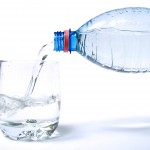 Get ready to drink lots of this... cheese pull apart…But I indulge in these white flour products at Sunday brunch only. The rest of the time it is real wholemeal, seeded or rye. In every case it is used sparingly.
In terms of grain foods – oats, steel curt in preference to instant 9additives) but oats for breakfast along with an egg, a coffee and fesh juice is the best way I know to start off a working day…
PASTA, NOODLES & RICE – Not eaten very often, always wholemeal for pasta, brown for rice and as low preservative / low additive as possible for noodles. Never white rice or ‘normal’ pasta.
BEANS / LEGUMES – Kidney beans, split peas, chickpeas and lentils are excellent sources of fibre, a great way to add body to a stew or casserole of substance to a salad. Look for tinned with few ingredients beyond the beans & water or go frozen.
SAUCES AND CONDIMENTS – Make your own (it’s worth the trouble) use vinegar, olive oil infused with spices, wine or again – low ingredient ones from the store. Look in the Asian section of your supermarket – try adding coconut milk or even using some of the green or yellow curries.
SPICES – Rosemary, oregano, thyme, basil, mints, chilli, coriander, oregano – the list is almost endless – not only do ‘hot’ spices give your metabolism a boost but spices in general add flavour, lift a dish and also boost your immune system. Grow them yourself or get fresh ones…
VEGETABLES – Easy lots & lots of these with as wide a variety of type & colours as you can find. 4 or
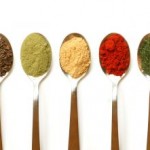 Spices - boost immune systems, metabolism & flavour!! 5 servings a day. Buy often to ensure freshness. Greengrocer in preference to supermarket, market in preference to greengrocer. Staples to have are: spinach, broccoli, capsicum / peppers, asparagus, tomatoes, mushrooms, Spanish onions, cucumbers, sweet potato, Bok Choy, fresh garlic & ginger, celery and carrots.
Planning & then Shopping Smart
Create a weekly meal plan based along sound nutritional (ie low processed carbs, high lean protein, high natural carbs) and shop to this. On average you will be eating between 21 and 42 times a week, every week depending whether or not you are eating 3 or 6 (recommended) times a day.
Aim for a 90% success rate. When, if, you fall short and eat some crap don’t berate yourself, enjoy the fact that you are indeed human and then get back into the right food right action saddle.
It can be hard replacing old behaviours with new habits (that’s all habits are – repeated behaviours) but once you have done something 21 times in a row it becomes a new habit. This is not as easy as it sounds but it holds enough truth for you to use it as a guideline! Add in the 90% compliance target and eating better is not as daunting as it first seems.
Use a list when shopping. Develop the list from your meal plan. Plan to buy fresh foods a couple of times during the week. Plan to buy non-perishable foods in bulk to cut down on expenses & time.
Shop the periphery of the supermarket (the fresh, frozen & refrigerated food departments) first then dive – fleetingly – into the aisles for other essentials. Avoid the soda & sweet aisles.
There you have it – clean out the crap, clean the kitchen and bring in the new!!!
Whatever body you are living in now – perhaps it is too fat or too thin, not tight enough or too tight, soft flabby or muscular – it doesn’t matter. What matters is that if you are not happy with it a new FY kick off starting in the kitchen could be all you need to transform your body for the better. You are, in the end, responsible for how you look & feel.
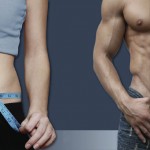 Your shape ultimately is up to you. Remember how you are now is the direct result of the person you are, and the decisions you have made. Stay the same and you’ll stay the same
Make the new Financial year – 2011 /12, not only the year that you master your meal plan – but the year that you stick to your resolutions and create a new body and a new life!
See you next time!! |














